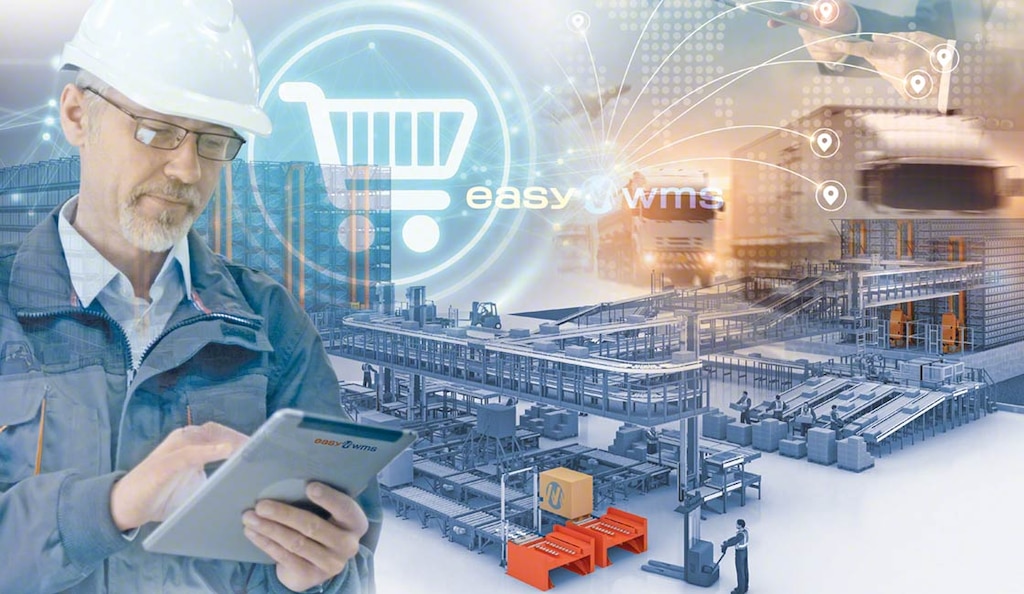
An integrated supply chain works like this
An integrated supply chain is a network of suppliers, manufacturers, and distributors that coordinate with each other to carry out the goods warehousing and distribution processes as effectively as possible.
An integrated supply chain is based on the digitization of processes to sync operations between companies involved in the design, manufacture, and marketing of a product. The implementation of warehouse management systems (WMSs) facilitates the transfer of information between logistics facilities and production centers.
What is an integrated supply chain process?
A supply chain is considered integrated when the different operations performed in it — e.g., raw materials procurement, product design, manufacturing, warehousing, and distribution — are synced.
According to the National Academies of Sciences, Engineering, and Medicine, “An integrated supply chain can be defined as an association of customers and suppliers who, using management techniques, work together to optimize their collective performance in the creation, distribution, and support of an end product.”
An integrated supply chain promotes product traceability, i.e., the monitoring of the life cycle of a good, including design, production, processing, and distribution. With synchronized operations, the different links of the supply chain know where each raw material, semi-finished good, or final product is located as well as the conditions in which each process was performed.
Integration could involve the acquisition or merger of other companies to expand their services, as well as the development of new lines of business covering more stages of the supply chain. This strategy can be applied in two ways:
- Horizontal integration: the acquisition or development of capabilities in the same link of the supply chain. An example of horizontal integration would be a soft drink distributor that acquires a regional competitor to expand its market and have more control over prices.
- Vertical integration: the acquisition or merger process involving several levels within the supply chain. In other words, vertical integration entails purchasing another business or developing in-house capabilities within the company to expand the scope of its services. This type of integration could occur, for instance, when a software business acquires a UX (user experience) company to reduce costs and control more levels of the supply chain.

4 benefits of supply chain integration
Having an integrated supply chain means sharing information on the processes and operations taking place in the facilities through which the product passes. Communication between the different links of an integrated supply chain makes it possible to:
- Eliminate cost overruns: the integration of the supply chain and trimming of unnecessary steps ― duplicate vendors or excessive inventory ― brings down the cost of the processes. Thus, the cost of storing stock can be minimized by increasing the speed of material flow between levels of the supply chain.
- More efficient logistics and production processes: doing away with excess suppliers leads to better coordination between levels, reducing supply chain costs and errors.
- Product traceability: integrating the different communication flows in a supply chain facilitates stock traceability. This is because each stakeholder has access to complete information on the batches of raw materials used on the production lines and on conditions under which the product was manufactured, stored, and shipped.
- Holistic, customer-centric vision: integration lets the companies participating in the supply chain see the big picture in terms of logistics and production processes. This comprehensive view is possible thanks to accurate information that enables organizations to make decisions in line with business needs.
How to integrate your supply chain
The study from consulting firm Grant Thornton 2020 Digital Supply Chain Survey indicates that only 17% of executives surveyed said that they had integrated supply chains in 2020. The report emphasizes the role of digitization in supply chain integration: "The digital opportunity is clear. New technologies and innovative digital strategies can help transform manufacturing industry supply chains to make them more efficient, more responsive, more agile and more competitive.”
Process digitization fosters coordination between the multiple levels of the supply chain, facilitating the transfer of information between the warehouses and production centers through which the product passes. Therefore, implementing a digital program such as warehouse management software or an enterprise resource planning (ERP) system can lower costs and cut out unnecessary stages.
An integrated supply chain involves sharing information flows in operations such as supply logistics, production line planning, inventory management, order distribution, the sale of the product or service to the customer, among many others. The visibility that supply chain integration gives businesses isn’t just relevant for company departments; it’s also crucial for the production and logistics managers. Integration between the various levels provides these managers with real and up-to-date information on the state of the products or the storage conditions, empowering them to make decisions that improve the quality of the logistics service.
Supply chain integration improves the quality of the end product or service through cooperation between the different levels. This is reflected by the authors of the publication Supply Chain Integration Capability: An Organizational Routine Perspective, who underline the need to eliminate repetitive operations from the supply chain: “[W]e define supply chain integration as the degree to which a company strategically collaborates and cooperates with other members of the supply chain, improving the flow of products, services, information, money and decisions through the supply chain, achieving a coordinated management of intra and inter organizational processes, which increase their efficiency and effectiveness.”

Software for supply chain integration
To benefit from an integrated, efficient supply chain, deploying warehouse management software is a must. These programs automate the transmission of information between the links of the supply chain, resulting in fewer errors in the stages of a product’s life cycle.
A warehouse management system (WMS) can be an extremely valuable tool for integrating the supply chain. The WMS is connected to the other software programs involved in the logistics management of a product — whether those of the company or of another organization — to improve information sharing and automate tasks.
Digitizing operations with warehouse management software such as Easy WMS makes it possible to sync information with other programs used in the supply chain, e.g., an ERP (the company’s or an ERP in another link), a manufacturing execution system (MES), or a transportation management system (TMS). In addition to their respective logistics functions, these applications facilitate the exchange of information between the levels of the supply chain, promoting product traceability and more effective operations.
A warehouse management system like Easy WMS includes specific modules to integrate the supply chain. Multi Carrier Shipping Software, for instance, ensures smooth communication between the company and the transportation agencies. Another Easy WMS module that supports supply chain integration is Marketplaces & Ecommerce Platform Integration: it syncs the catalog of the different online points of sale with the actual stock in the warehouse, avoiding mistakes in order management and inventory control.

Integrated supply chain for efficient warehousing
Sharing information flows with the rest of the links in the supply chain minimizes the risk of error in inventory management, product manufacturing, and order fulfillment. This is why more and more companies are investing in digital solutions that foster the integration of all links in the supply chain.
Software such as Easy WMS from Interlake Mecalux syncs information on warehouse operations with other logistics centers, with other programs within the same organization, and even with different types of software programs belonging to other supply chain participants. Want to be part of an integrated supply chain? Don’t hesitate to contact us. One of our expert consultants will work with you to come up with the best digital solution for your warehouse.
